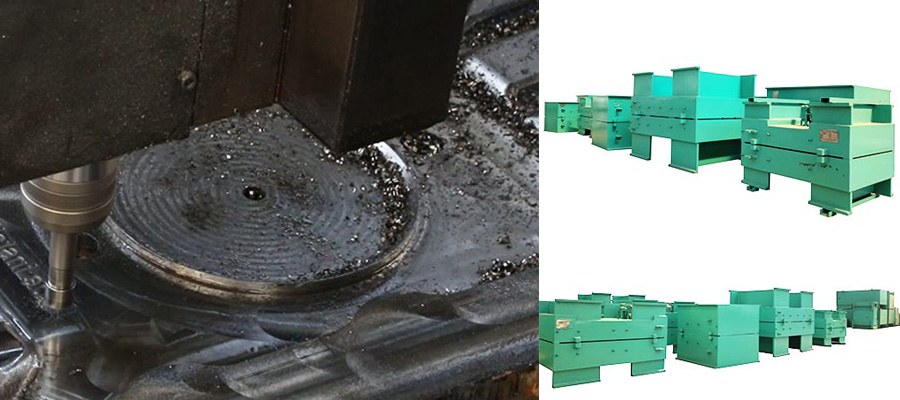Today, Yankang Plastic Machinery will share with you the principle and method of mould temperature control.
The mould temperature has a great influence on the forming quality and efficiency of the plastic parts.
Why Mould Temperature Control Is Important?
The mould temperature control is the most important variable during blow molding processing.
In the mould with higher temperatures, the fluidity of melt adhesive is good, which is helpful for the glue material to stick to the mould cavity and obtain the appearance surface of high-quality adhesive parts.
However, it will make the curing time of the glue longer and deform easily when it is pushed out.
It is more advantageous to the crystallization process to avoid the size change of the colloidal parts in storage and use.
In the mold with low temperature, it is difficult for the molten glue to stick closely to the mold cavity, resulting in increased internal stress, dull surface, silver lines, weld marks, and other defects.
Different plastic materials have different processing technology, and the surface requirements and structure of various plastic parts are different. In order to produce qualified rubber parts in the most effective time, the mold is required to maintain a certain temperature. The more stable the mold temperature is, the more consistent the size, shape, and appearance quality of the produced rubber parts are required.
It can reduce the costs of blow molding.
It determines the quality features of the blow molding products.
It ensures the correct reproduction of the surface.
It ensures shrinkage behavior is uniform.
Therefore, in addition to the mould manufacturing factors, mold temperature is an important factor to control the quality of the rubber parts. The control method of mould temperature should be taken into full account in die design.
Principle of Mould Temperature Control
In order to ensure the production of rubber parts with high appearance quality, stable size and small deformation within the most effective time, the basic principles of mold temperature control should be clearly understood in the design.
In general, the principle of mould temperature control is to ensure the high performance of blow molding products, the quality meets the production requirements, the dimensional stability is good, the dimensional error is small, the molding cycle is short, the energy consumption is low, and the waste generated is less.
(1) different mold temperatures are required for different rubber materials.
(2)molds with different surface quality and different structures require different mold temperatures. This requires that the design of the temperature control system is targeted.
(3) the temperature of the front mold is higher than that of the back mold. Generally, the temperature difference is about 20 to 30 degrees.
(4) the temperature of the front mold required by the fire pattern is higher than that required by the generally smooth surface. The current mold must be hot water or oil, the general temperature difference is about 40 degrees.
(5) when the actual mold temperature cannot reach the required mold temperature, the mold shall be heated up. Therefore, the mold design should fully consider whether the heat input into the mold can meet the mold temperature requirements.
(6) the heat brought into the mold by the glue shall be consumed by means of thermal radiation and heat conduction, and most of the heat shall be taken out of the mold by the circulating heat medium. Beryllium copper and other heat transfer parts are no exception.
(7) the mold temperature should be balanced, without local overheating or undercooling.
Mold Temperature Control Method
Mold temperature is generally controlled by adjusting the temperature of the heat transfer medium, adding a heat insulation board, and heating bar. The medium of heat transfer is usually water, oil, etc. Its channel is often called the cooling channel.
To reduce the mold temperature, “machine water” (about 20 degrees) and “frozen water” (about 4 degrees) are generally adopted for the front mold opening. When the channel of a heat transfer medium, i.e. cooling channel, cannot pass through some parts, the material with higher heat transfer efficiency (such as beryllium copper, etc.) should be used to transfer heat to the heat transfer medium, or the “heat pipe” should be used for local cooling.
To raise the mold temperature, hot water and hot oil (hot water machine heating) are usually introduced into the cooling channel. When the mold temperature requirements are high, in order to prevent heat conduction on the loss of heat, die panel should be added.
About blow molding moulds, although Yankang Plastic Machinery mainly produces blow molding machines, the plastic moulds for blow molding machines also available. In order to achieve perfect cooperation between the mould and the blow molding machine, produce high-quality products, Yankang adopt CNC technology to design and produce plastic mould independently. Minimize the error.

About the control process during the production, Yankang blow molding machine adopt an advanced PLC Control System, ensure the control effect is more precise.
Cooling System Design Principles
(1) the distance from the hole wall of the cooling channel to the surface of the mold cavity should be as equal as possible, usually 15~25mm.
(2) the number of cooling channels should be as large as possible, and the distance between two parallel channels should be 40~60mm.
(3) all molding parts are required to pass through the cooling channel unless there is no location and the heat accumulation part is strengthened in cooling.
(4) reduce the temperature difference between the inlet and outlet. The temperature difference of water in and water out will affect the uniformity of mold cooling. Therefore, the direction of water in and water out should be marked in the design. The water transport process should not be too long to prevent excessive temperature difference between water and water.
(5) minimize the presence of “dead water” (medium not involved in the flow) in the cooling channel.
(6) the cooling channel shall be avoided to be located at the predictable weld mark of the adhesive parts.
(7) ensure the minimum edge distance of the cooling channel (that is, the minimum steel thickness around the water hole). It is required that when the length of the channel is less than 150mm, the edge distance shall be greater than 3mm. When the length of the channel is greater than 150mm, the side spacing is greater than 5mm.
(8) when connecting the cooling channel, it shall be sealed with an “O” rubber seal, and the seal shall be reliably free of water leakage.
(9) other cooling methods, such as beryllium copper and heat pipe, should be adopted for the locations where the cooling channel is difficult to arrange.
(10) determine the location of the cooling water joint reasonably to avoid influencing the installation and fixation of the mold.
So that’s what I want to share with you the principle and method of mould temperature control.
To learn more about blow molding machines, click on the blog of Yanakng Plastic Machinery.

